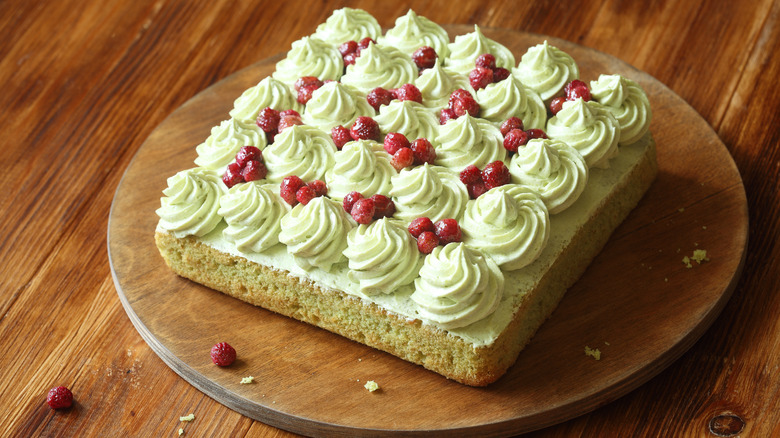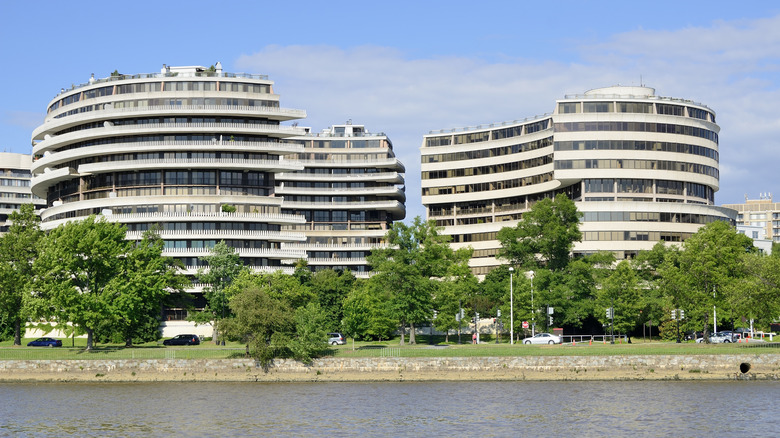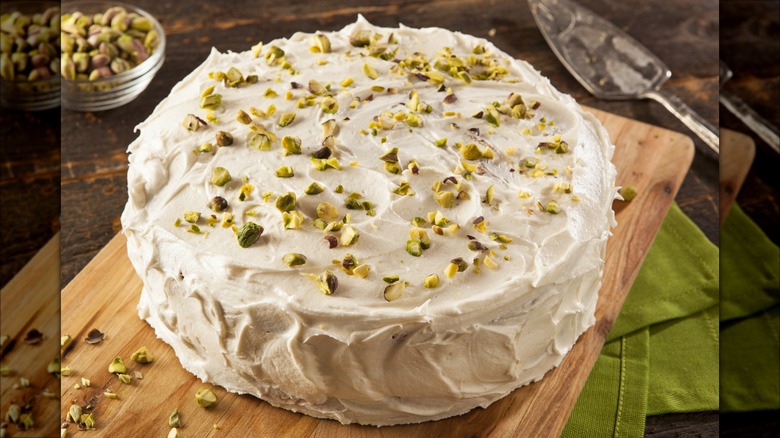What Is Watergate Cake And Why Is It Called That?
There are a lot of old-fashioned recipes that fell out of style over the decades. Some have been rightfully consigned to the dustbin of history (nobody wants to admit there was a time when "bananas hollandaise") was a thing. But some have made something of a comeback in recent years, as home cooks experiment with long-forgotten recipes to find hidden gems. An excellent example of this phenomenon is Watergate cake, a mix of pistachios, pecans, coconut, and (of all things) 7UP.
But why in the world would it be called a Watergate cake? As best as anyone can tell, the answer to "Where did the name come from" seems to have originated with one extremely bad joke in the early 1970s. Yes, despite the fact that the cake predates the scandal with which it shares a name, it appears to have taken its modern name from the Watergate you thought of when you read the headline.
Watergate cake predates the actual Watergate scandal
Watergate cake — or at least its progenitor — originally comes from the '50s and '60s, well-known as the era when bright pale green food was all the rage (witness, for example, the grasshopper pie). There's nothing inherently wrong with a bright green dessert — Key lime pie exists, after all — but deliberately making your food that particular shade of green is nevertheless something that was once far more popular than it is today.
As for what it is, it starts with a base of either white or yellow cake mixed with pistachio pudding mix (sometimes colored extra green with food dye depending on the recipe). Chopped pecans and coconut flakes are then added to the outside. Throw on a dairy-based pistachio-flavored icing and you've got yourself a Watergate cake, a bright seafoam green confection sure to water both the eyes and the tastebuds. Sometimes the coconut and pecans go atop the icing, and maybe you'll put a cherry on it if you feel like being extra, but other than that, there you have it.
Its original form was a bit different; it still involved a pistachio base, but the rest of the flavors involved were things like marshmallows and pineapple. As far as we can tell, its original name was something simple and nondescript like "pistachio salad" or "pistachio cake." In the early '70s, it evolved into its final form — probably right alongside the scandal that gave it its name.
The Watergate cake's popularity spiked right when you'd expect
A quick refresher: In 1972, agents found to be acting on the orders of President Richard M. Nixon were caught breaking into the Democratic National Committee headquarters at Washington D.C.'s Watergate hotel. This became known as the Watergate scandal and ultimately resulted in Nixon becoming the first, and thus far, only president ever to resign the office.
And oh boy, did this have a far-reaching cultural impact. If you've ever wondered why every scandal gets the "-gate" suffix added to it, this is why. Perhaps nowhere is this more obvious, though, than the sudden renaming and precipitous rise in popularity of the Watergate cake from 1972-74. As far as the joke involved in the cake's name...well, you might want to sit down for this one. Supposedly, it's called the Watergate cake because under its covering of bright, colorful icing, it hides a bunch of nuts. That one must have been a real thigh-slapper in 1974.
So if you've ever wondered, "Is there a bright green baked good named after America's greatest presidential scandal?" (and really, who hasn't?) well, there's your answer for you. Give it a try sometime.


